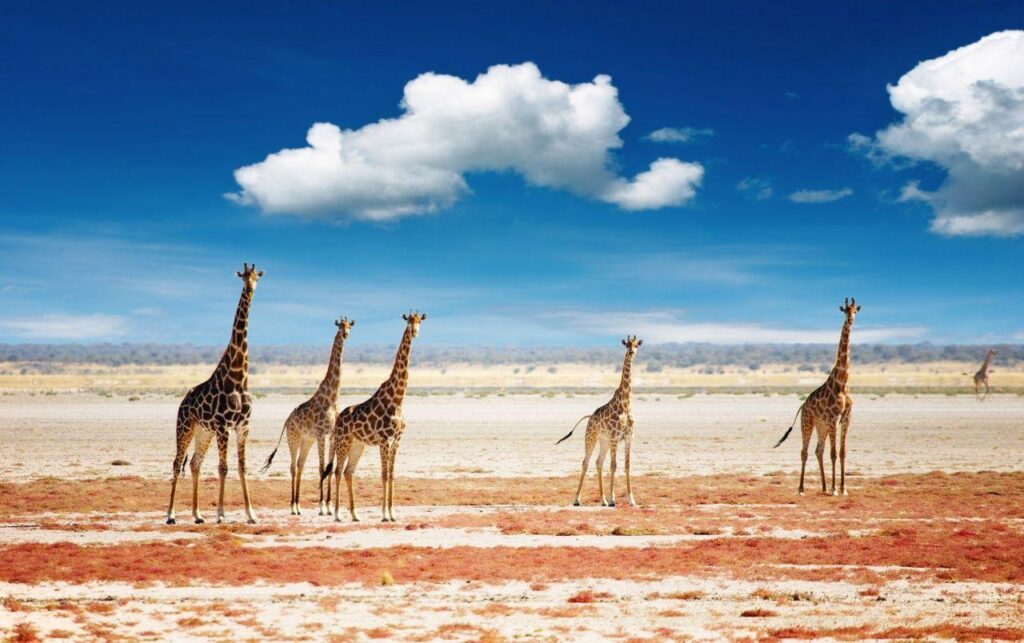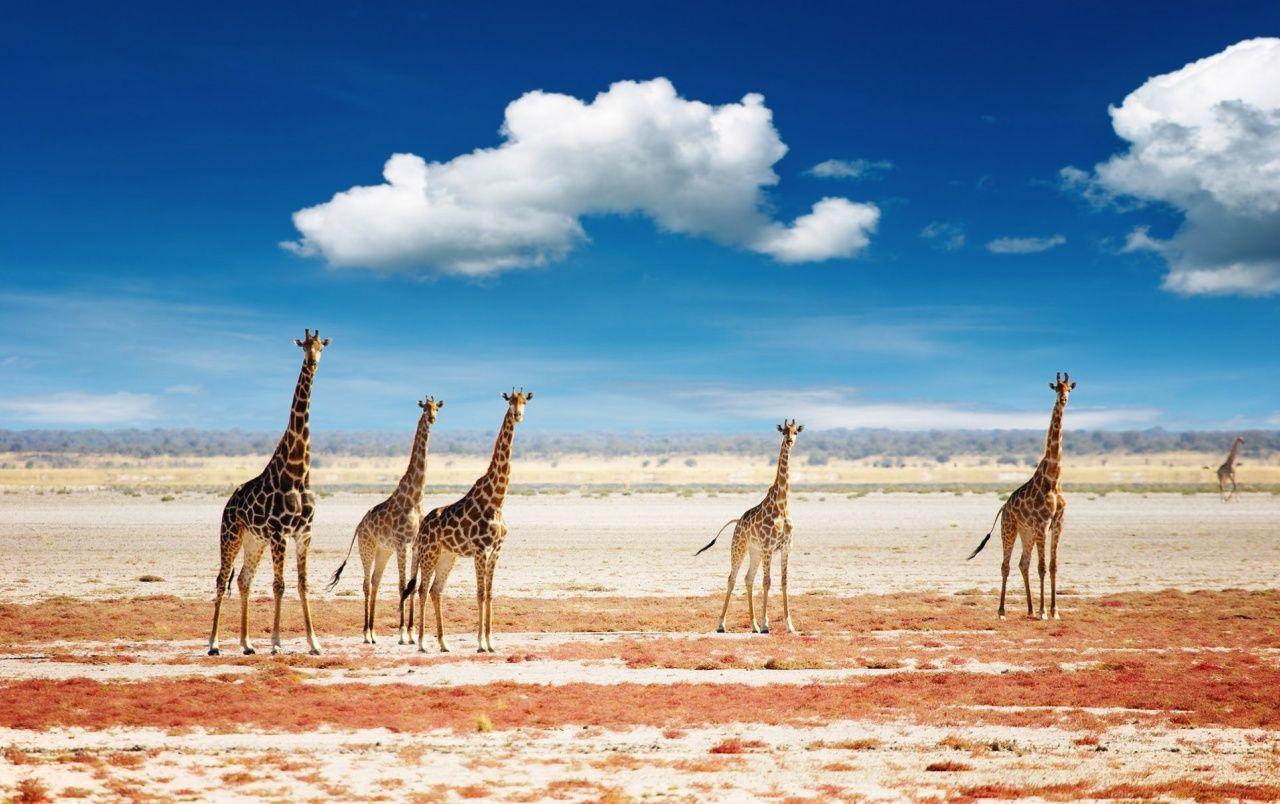
Exploring the Diverse Beauty of the African Landscape
The African landscape is a tapestry of breathtaking beauty and unparalleled diversity. From the sweeping savannas teeming with wildlife to the towering dunes of the Sahara Desert, from the lush rainforests echoing with exotic calls to the snow-capped peaks of Mount Kilimanjaro, Africa presents a panorama of natural wonders that captivates the imagination and inspires awe. This article delves into the various facets of the African landscape, examining its geographical features, ecological significance, and the impact of human activity on its delicate ecosystems.
Geographical Diversity: A Continent of Contrasts
Africa’s geographical diversity is truly remarkable. The continent spans a vast area, encompassing a wide range of climates and terrains. The Sahara Desert, the largest hot desert in the world, dominates the north, while the Congo Basin, a vast rainforest, lies in the heart of the continent. The Great Rift Valley, a geological marvel, stretches for thousands of kilometers, creating dramatic landscapes of volcanic mountains, deep lakes, and fertile valleys. The African landscape is a study in contrasts, offering something for every nature enthusiast.
The Sahara Desert: A Sea of Sand
The Sahara Desert, a seemingly barren expanse, is far from lifeless. Adapted to the harsh conditions, various plants and animals thrive in this arid environment. Nomadic tribes have also learned to survive in the Sahara, relying on camels for transportation and trade. The shifting dunes, the occasional oasis, and the stunning sunsets make the Sahara a truly unique and unforgettable part of the African landscape. The challenges faced by those living in and around the Sahara also highlight the importance of sustainable resource management.
The Congo Basin: A Green Heart
In stark contrast to the Sahara, the Congo Basin is a lush, green rainforest teeming with life. Home to a vast array of plant and animal species, including gorillas, chimpanzees, and okapi, the Congo Basin is a biodiversity hotspot of global importance. The Congo River, the second-longest river in Africa, flows through the heart of the rainforest, providing a vital source of water and transportation. Protecting the Congo Basin is crucial for maintaining the ecological balance of the African landscape and the planet as a whole.
The Great Rift Valley: A Geological Wonder
The Great Rift Valley, a geological scar that stretches from the Middle East to Mozambique, is one of the most dramatic features of the African landscape. Formed by tectonic activity, the valley is characterized by volcanic mountains, deep lakes, and fertile valleys. The region is also rich in fossils, providing valuable insights into the evolution of humans and other species. The Great Rift Valley is a testament to the powerful forces that have shaped the African landscape over millions of years.
Ecological Significance: A Cradle of Biodiversity
The African landscape is not only visually stunning but also ecologically significant. The continent is home to a vast array of plant and animal species, many of which are found nowhere else on Earth. From the iconic African savanna to the diverse coral reefs of the Indian Ocean, Africa’s ecosystems play a vital role in maintaining the health of the planet. The preservation of these ecosystems is essential for ensuring the survival of countless species and the well-being of human populations.
The African Savanna: A Wildlife Paradise
The African savanna, a vast grassland dotted with trees, is perhaps the most iconic image of the African landscape. Home to a wide range of large mammals, including lions, elephants, giraffes, and zebras, the savanna is a wildlife paradise. The annual migration of wildebeest and other herbivores across the savanna is one of the most spectacular natural events on Earth. Protecting the savanna from habitat loss and poaching is crucial for preserving the biodiversity of the African landscape.
Coastal Ecosystems: A World of Underwater Wonders
Africa’s coastline is as diverse as its interior, encompassing a wide range of ecosystems, including mangrove forests, coral reefs, and seagrass beds. These coastal ecosystems provide vital habitat for a variety of marine species and play a crucial role in protecting coastlines from erosion. The coral reefs of the Indian Ocean are particularly rich in biodiversity, attracting divers and snorkelers from around the world. Sustainable management of coastal resources is essential for preserving the ecological integrity of the African landscape.
Human Impact: Challenges and Opportunities
The African landscape faces numerous challenges, including habitat loss, deforestation, poaching, and climate change. Human activities have had a significant impact on the continent’s ecosystems, threatening the survival of many species and the livelihoods of local communities. However, there are also opportunities to mitigate these impacts and promote sustainable development. Conservation efforts, ecotourism, and community-based resource management can all play a role in protecting the African landscape for future generations.
Deforestation and Habitat Loss: A Growing Threat
Deforestation and habitat loss are major threats to the African landscape. As human populations grow, forests are cleared for agriculture, logging, and urbanization. This deforestation leads to soil erosion, water pollution, and the loss of biodiversity. Protecting existing forests and promoting reforestation efforts are crucial for mitigating these impacts. Sustainable land management practices can also help to reduce habitat loss and promote the long-term health of the African landscape. [See also: Sustainable Forestry Practices in Africa]
Poaching and Wildlife Crime: A Deadly Trade
Poaching and wildlife crime are a serious threat to many species in Africa, including elephants, rhinos, and pangolins. Driven by the demand for ivory, rhino horn, and other wildlife products, poachers kill thousands of animals each year, threatening their survival. Strengthening law enforcement, increasing penalties for poaching, and reducing demand for wildlife products are essential for combating this deadly trade. Community involvement in conservation efforts can also play a vital role in protecting wildlife populations across the African landscape. [See also: Anti-Poaching Strategies in National Parks]
Climate Change: An Existential Threat
Climate change is an existential threat to the African landscape. Rising temperatures, changing rainfall patterns, and increased frequency of extreme weather events are already having a significant impact on the continent’s ecosystems and human populations. Droughts, floods, and wildfires are becoming more common, threatening agriculture, water resources, and human health. Reducing greenhouse gas emissions, adapting to the impacts of climate change, and promoting climate-resilient development are essential for safeguarding the future of the African landscape. [See also: Climate Change Adaptation in African Agriculture]
Conservation Efforts: Protecting the Future
Despite the challenges, there are many reasons to be optimistic about the future of the African landscape. Conservation efforts are underway across the continent, aimed at protecting endangered species, restoring degraded ecosystems, and promoting sustainable development. National parks, wildlife reserves, and community-based conservation initiatives are playing a vital role in preserving the biodiversity of the African landscape. By working together, governments, communities, and international organizations can ensure that the natural wonders of Africa are protected for generations to come. The diverse African landscape is something to be cherished.
Conclusion: A Legacy of Natural Beauty
The African landscape is a treasure trove of natural beauty and ecological significance. From the vast deserts to the lush rainforests, from the towering mountains to the diverse coastlines, Africa offers a panorama of natural wonders that inspires awe and wonder. While the continent faces numerous challenges, conservation efforts are underway to protect its ecosystems and promote sustainable development. By working together, we can ensure that the African landscape remains a legacy of natural beauty for future generations. The African landscape, with its unique flora and fauna, is truly a global asset. The future of the African landscape depends on our collective action. The African landscape is more than just a place; it’s a vital part of our planet’s heritage. Preserving the African landscape is a responsibility we all share. Let us all strive to protect the magnificent African landscape. The African landscape is an inspiration.

